These old-soul musicians smother their classy Fender and Gibson guitars with tasty tremolo and splashy reverb, creating a reverential sound that bridges smooth Motown and slick modernity.
In just seven years since meeting based on a recommendation, Eric Burton and Adrian Quesada formed the Black Pumas, released two albums, and have already been nominated for seven Grammys. However, this fruitful friendship was almost never developed.
Quesada was enrolled at the University of Texas but flunking out due to his dedication to guitar over textbooks. His parents gave him a proposition: Either stay home in Laredo, or return to Austin without a guitar in hand to focus on studying. He went with option B and headed back for school in Austin—or so his parents thought. Quesada took his remaining book money (about $200) and headed to Ray Hennig’s Heart of Texas, where he snagged a Squier Telecaster Thinline. His parents eventually figured out the switcheroo, but Quesada was determined and hasn’t looked back. (Side note: The family obviously sees and supports his musical talents, and attended Black Pumas’ Ryman show the night before the filming of this Rig Rundown.)
That matador move pulled off by Quesada allowed him to become a longtime fixture in the Austin music scene with bands Brownout, Ocote Soul Sound, Spanish Gold, Echocentrics, and Grupo Fantasma (with whom he played for over 15 years, earning a 2011 Grammy for Best Latin Rock or Alternative Album). He started to explore new ideas that didn’t fit the mold for Grupo, and needed someone to narrate his musical vistas. A friend recommended he link up with Austin newcomer Eric Burton, who traded his busking spot on the Santa Monica pier for the bright lights of Sixth Street. The duo met up, and as the results prove, the rest is history.
Before the Black Pumas’ second headlining show at the Ryman Auditorium in downtown Nashville, bandleader Adrian Quesada, bassist Brendan Bond, and band tech Bryan Wilkinson invited PG’s Chris Kies into the hallowed grounds for a chill conversation about their tonal tools. During our time with the Black Pumas, we learned about Quesada’s love for tremolo (he even included it as a secret weapon in a semi-hollow Jazzmaster), Bond’s fateful trip to the Wilco Loft in Chicago, and why a ’59 ES-125 is Wilkinson’s perfect pairing with Burton’s expressive and emotive voice.Brought to you by D'Addario:
https://ddar.io/wykyk-rr
https://www.daddario.com/XPNDRR
The Custom Shop Cracks the Code
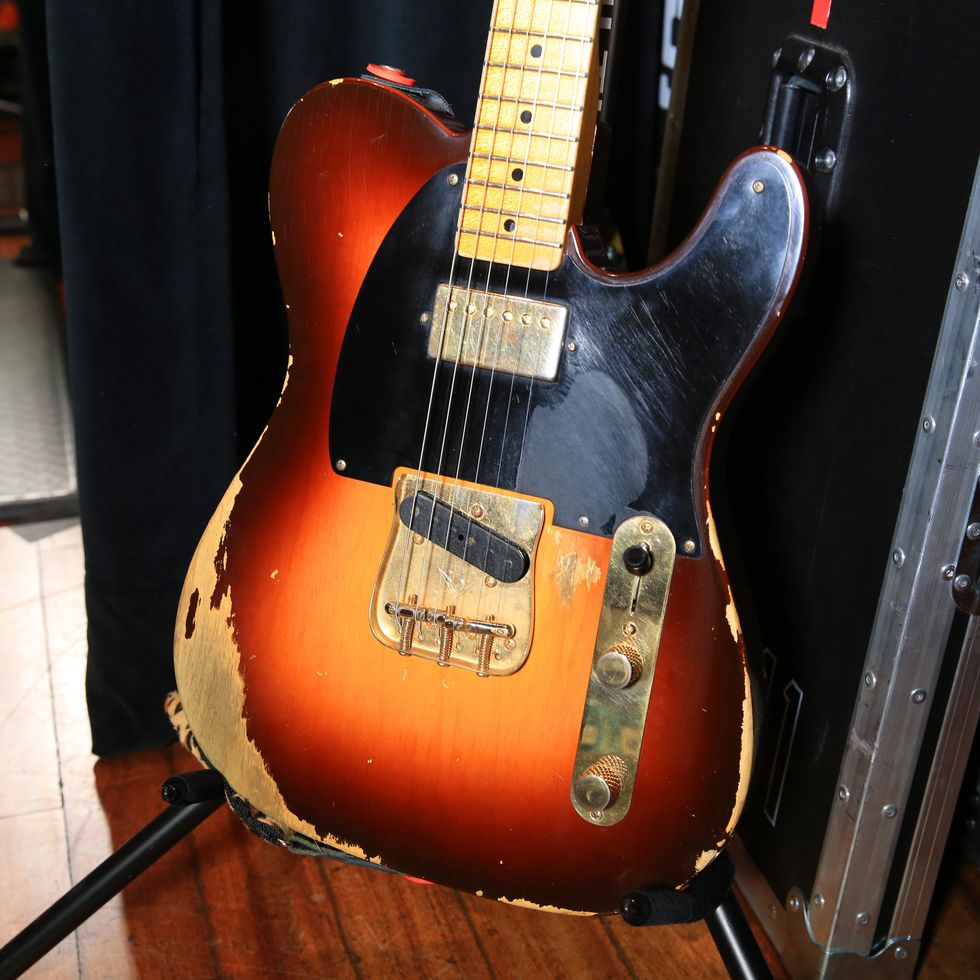
Black Pumas’ 2019 self-titled debut was like a drug—it soothed, it hypnotized, it recalled the past, it burned slow, and it was an addictive listen. It helped the band tally four Grammy nominations. But in addition to all that attention, it caught the collective ear of the Fender Custom Shop squad, who wore it out for months—so much so, that the team built the above Telecaster. Their aim was to create a guitar that nailed Quesada’s tones on the album, and they surprised the Texan with it. He’s been in love ever since, and mentioned that he’s collaborated on two other Teles—having some input on specs and design—but neither sound as stellar as this one. This one-off Tele is a pairing of a ’60s-style T (sunburst finish with a maple fretboard, standard-sized headstock, small pickguard, and barrel knobs), and a ’72 Telecaster Custom (single-coil-and-humbucker pickup configuration). Since acquiring it, this Tele has been Quesada’s main guitar onstage. He puts D’Addario EXL125 XLs (.009 –.046) on all his guitars, and uses Dunlop Tortex picks with custom printed Black Pumas graphics.
Lucky Loaner
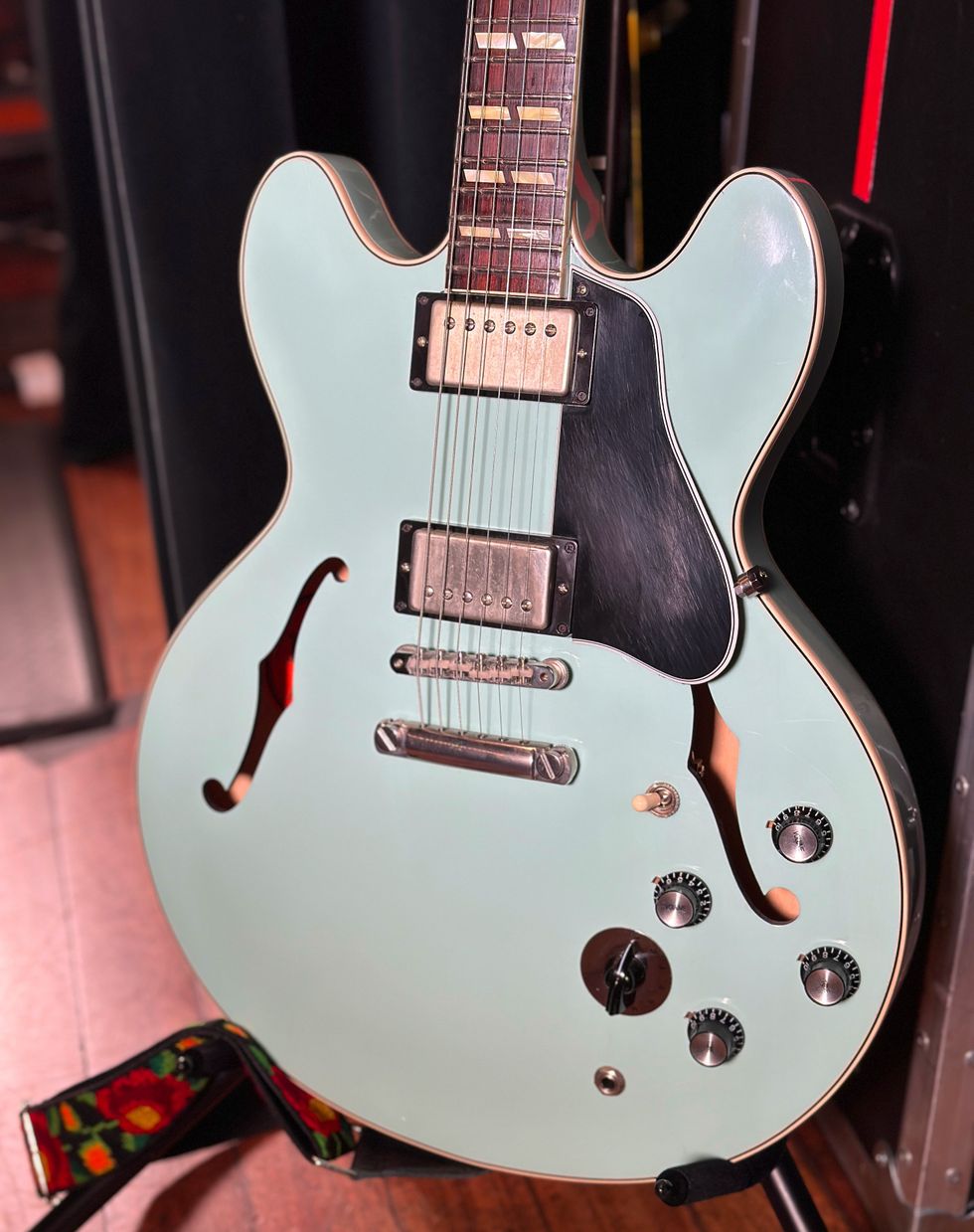
The guitar that Quesada used the most prior to Black Pumas was a Gibson ES-446 that marries a 335 with a Les Paul. He loved its woody core tone and its humbuckers’ ability to lasso fuzz in a musical way. He’s retired the steed to the sanctuary of the studio, but stills requires sinewy sounds, so he checked in with Gibson to borrow a 335. They didn’t have one available but gave him this 345, which has proven a dependable sidekick punching in for time onstage and in the studio. Quesada mentions that the Varitone switch is useful for the studio, but he leaves it in position one (bypass) for Black Pumas’ sets.
A Puma and Jaguar Walk Into the Ryman...
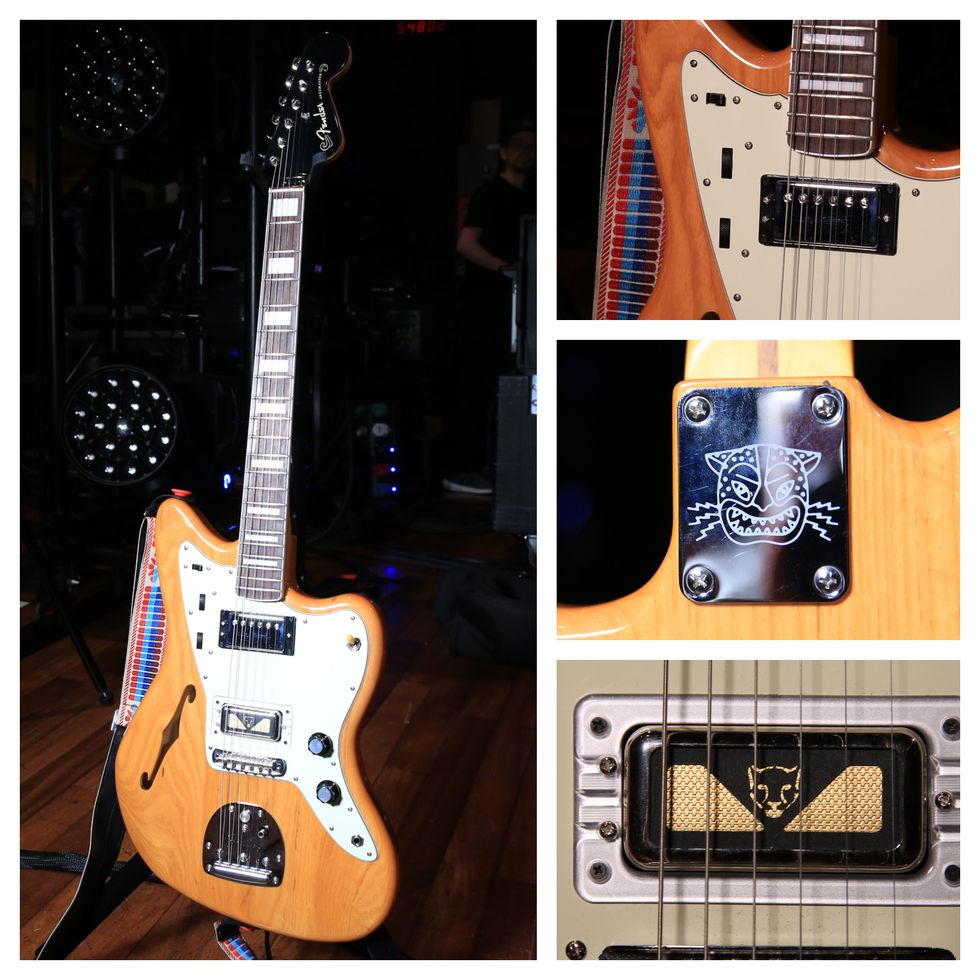
And they sell it out two nights in a row! This fresh feline is the result of another partnership between Quesada and the Fender Custom Shop. He wanted another thinline instrument, but already designed a Tele, so he gravitated to the popular offset body style. The alder body with a natural finish is a nod to his first Squier Tele. The pickups are a custom gold-foil (adorned with a coy puma hood) in the bridge and a covered ShawBucker. It features a Fender American Vintage Jazzmaster bridge and tremolo. A striking bound rosewood fretboard with block inlays sits atop a maple neck that is capped with a blacked-out headstock. The 4-bolt neck plate honors Quesada’s Electric Deluxe with the recording space’s logo.
The real magic in this cunning cat is where the Jazzmaster’s rhythm circuit is supposed to reside. In its place is a tremolo circuit because Quesada cooks his tone in that effect like it’s salt and pepper. In 2022, he confessed to PG, “I love everything with tremolo. I put tremolo on everything,” so we should’ve seen this coming. The rocker switch toggles the tremolo on and off, and the two rollers control speed and depth.You're My Boy, Blue!
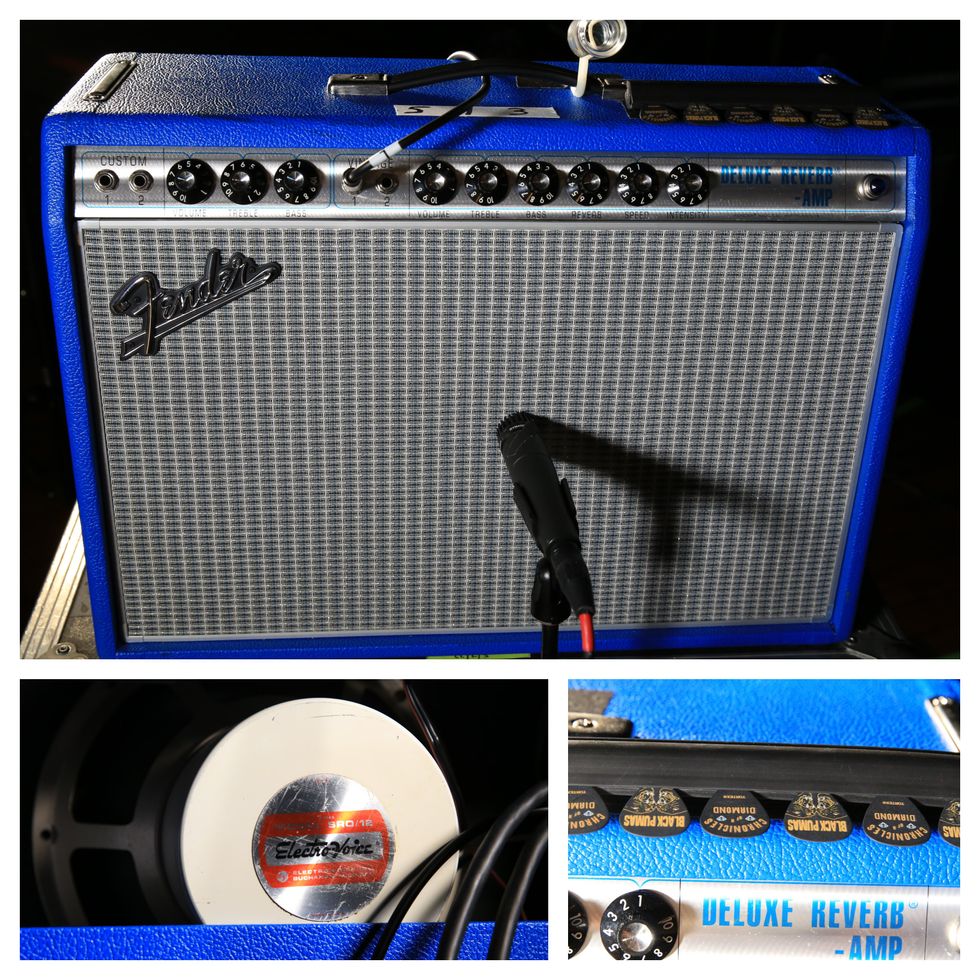
Adrian adores Fender amps. His Austin-based recording studio is loaded with noteworthy models from the company’s golden years, yet he proudly tours with a Fender Limited Edition Electric Blue ’68 Custom Deluxe Reverb reissue. (It’s worth stating that a proper ’72 silver-panel Deluxe Reverb was in a road case.) The bright tolex covers an otherwise standard circuit, however the stock combo did have a Celestion Creamback in it. But when Quesada’s tech Bryan Wilkinson found and landed the score for his boss off Craigslist, it had been modded with an Electro Voice SRO Alnico 12" speaker. Adrian loved how it sounded, so it stayed in, and he’s been using the combo on tour ever since.
Adrian Quesada's Pedalboard
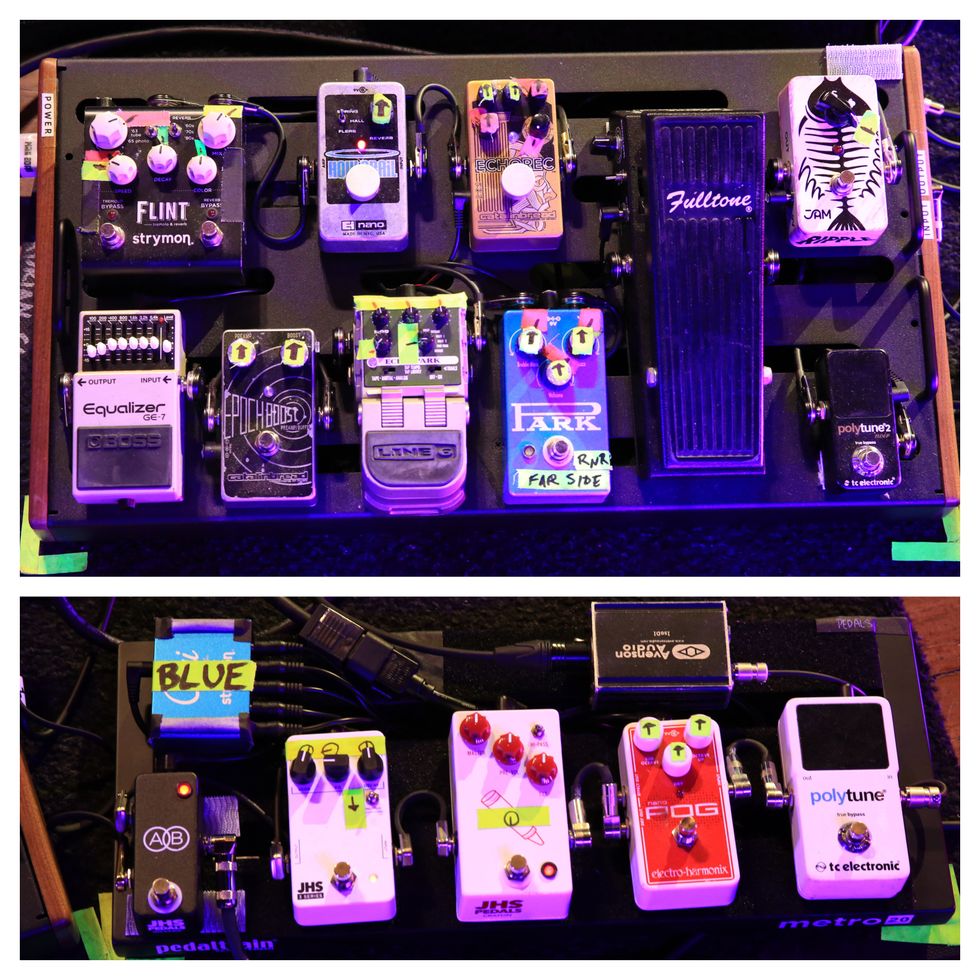
We’ve established that Quesada lays on some tremolo any time his guitar is plugged in, but another stompbox spice he rarely avoids is reverb. He does acknowledge that amp reverb, especially from Fender combos, is tasty, but having it in a pedal format allows fine-tuning from gig to gig and room to room. Doing the heavy lifting for both effects is the Strymon Flint. (Adrian mentions that he turned Alejandro and Estevan of Hermanos Gutiérrez onto this staple, found on both of their boards.)
The other stomp stalwart has been the Electro-Harmonix Holy Grail that provides a healthy dose of spring reverb. Both ’verbs are engaged for drippy songs like “Fire.” He has a pair of delays: a Line 6 Echo Park used for its tap tempo function, and a Catalinbread Echorec for longer, dreamier repeats. The Boss GE-7 Equalizer works to match the different outputs between his three main instruments. A Catalinbread Belle Epoch preamp/buffer pedal replaced an Xotic EP Booster because it has a second knob for preamp for more detailed contouring.
Any growl or sizzle Quesada needs for his Tele and Jazzmaster, the EarthQuaker Devices Park Fuzz handles it. The Fulltone Clyde Wah Deluxe has stepped in for a different filter sweeper because Adrian digs its full-sounding throw that stays warm from heel to toe. A Jam Pedals Ripple two-stage phaser gets used on a track from Chronicles of a Diamond, and a TC Electronic PolyTune2 Noir keeps his guitars in check.
His second board (bottom) bypasses the amp and was specifically built to play roughly with Quesada’s 345, recreating a guitar-into-console overdrive sound that gets pumped into the onstage monitors and PA. To capture that crackly goodness, he runs the 345 into a combination of pedals including a JHS 3 Series Delay, a JHS Crayon, and an Electro-Harmonix Nano POG. Utility boxes on here—Strymon Ojai, JHS Mini A/B, and TC Electronic PolyTune—handle switching, tuning, and power.
P for B
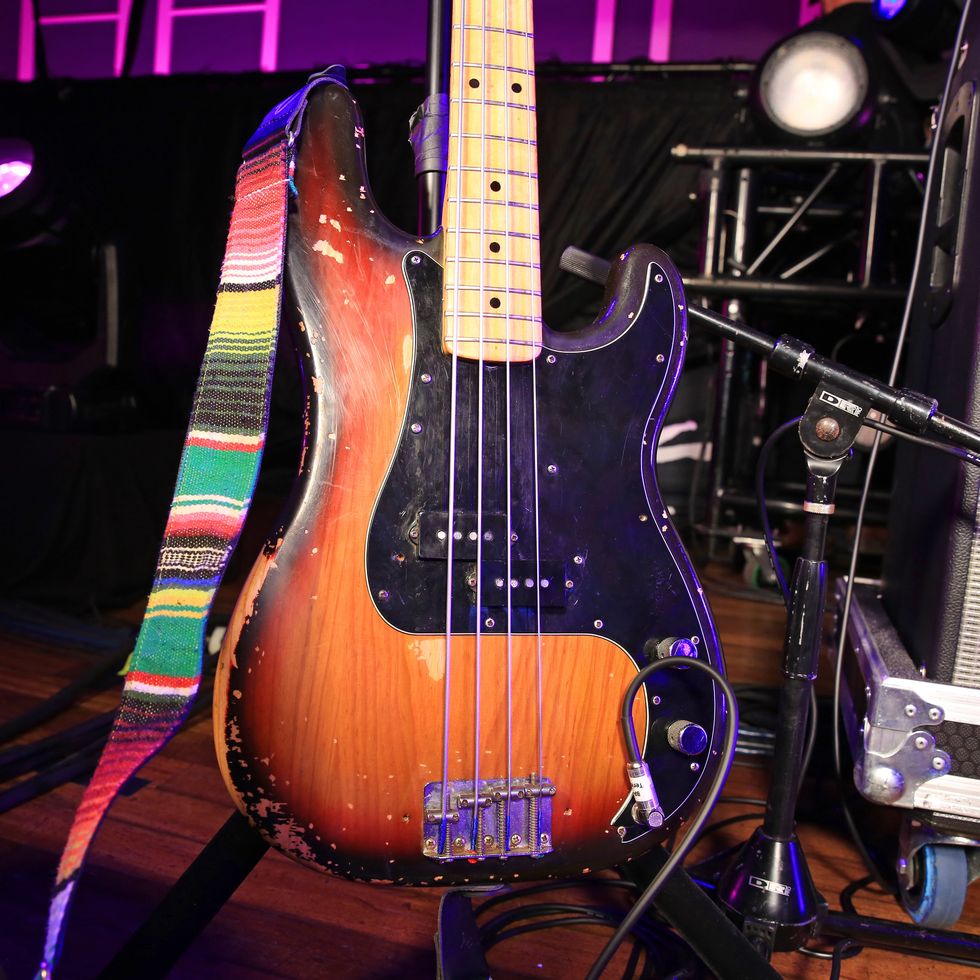
Black Pumas bassist Brendan Bond had the good fortune to hang out at the Wilco Loft in the Irving Park neighborhood of Chicago. He quickly bonded with an old P bass that preoccupied most of his time in the space. Up to that point, his fingers have mostly danced around newer basses, so the allure of vintage gear never tempted him. That all instantly changed (“It was like I was playing a different instrument,” he commented), and when he landed back in Austin, Texas, he took a car right to Austin Vintage Guitars, where he landed this 1974 Fender Precision bass. It’s been his main sweetheart ever since. He puts D’Addario ECB81 Chromes Flatwounds (.045 –.100) on it, and always plays with his fingers in Black Pumas.
Tube Time
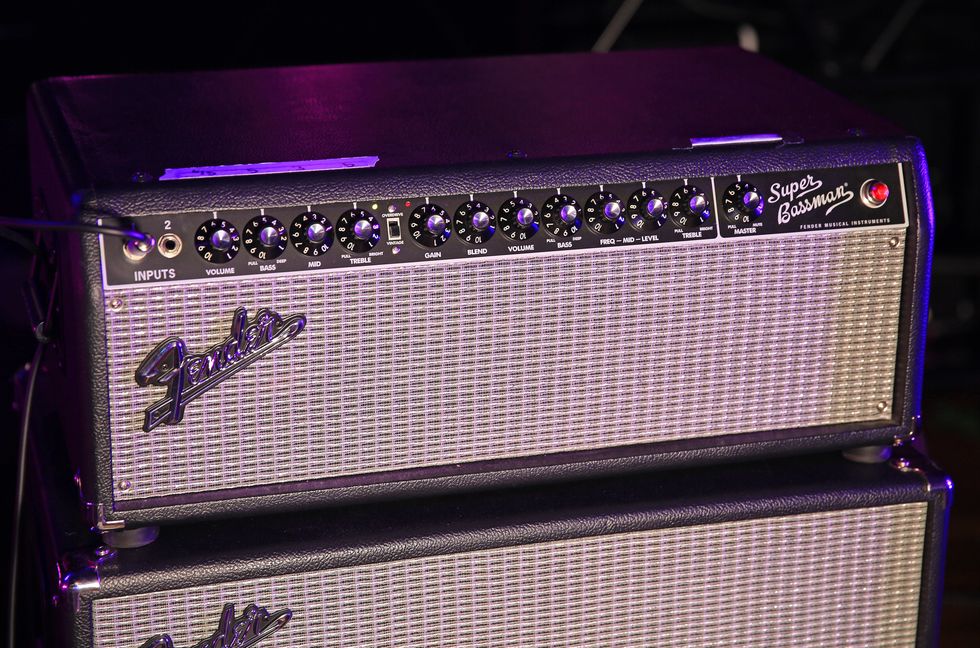
Bond has toured with lightweight, class-D bass amps, but now given the opportunity that his own back doesn’t have to lug the gear, he’s bringing out the big guns in the shape of an all-tube, 6550-powered Fender Super Bassman that hits a matching Bassman 410 Neo cab.
Brendan Bond's Pedalboard
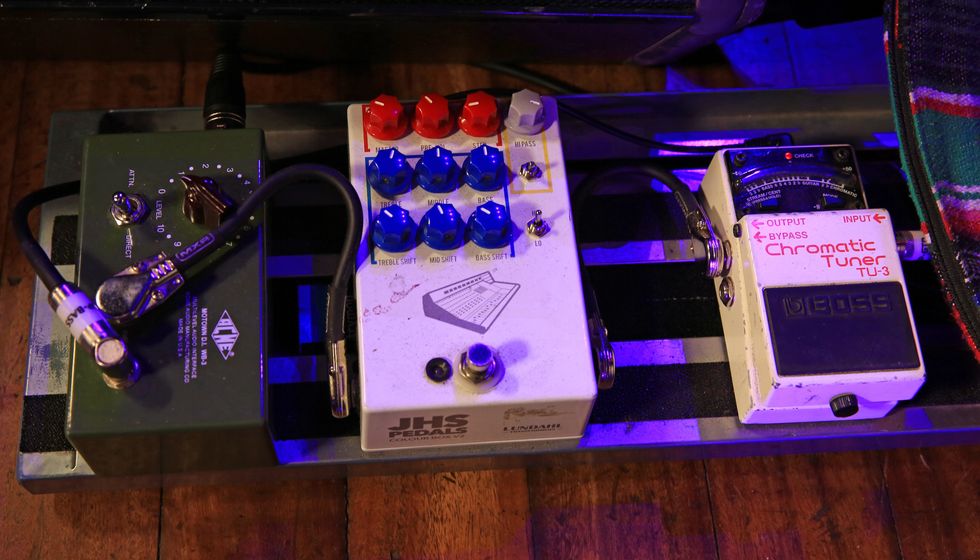
Three pedals get the job done for Bond: an Acme Audio Motown D.I. WB-3 Passive D.I., a JHS Colour Box, and a Boss TU-3 Chromatic Tuner.
A '59, But Not That '59
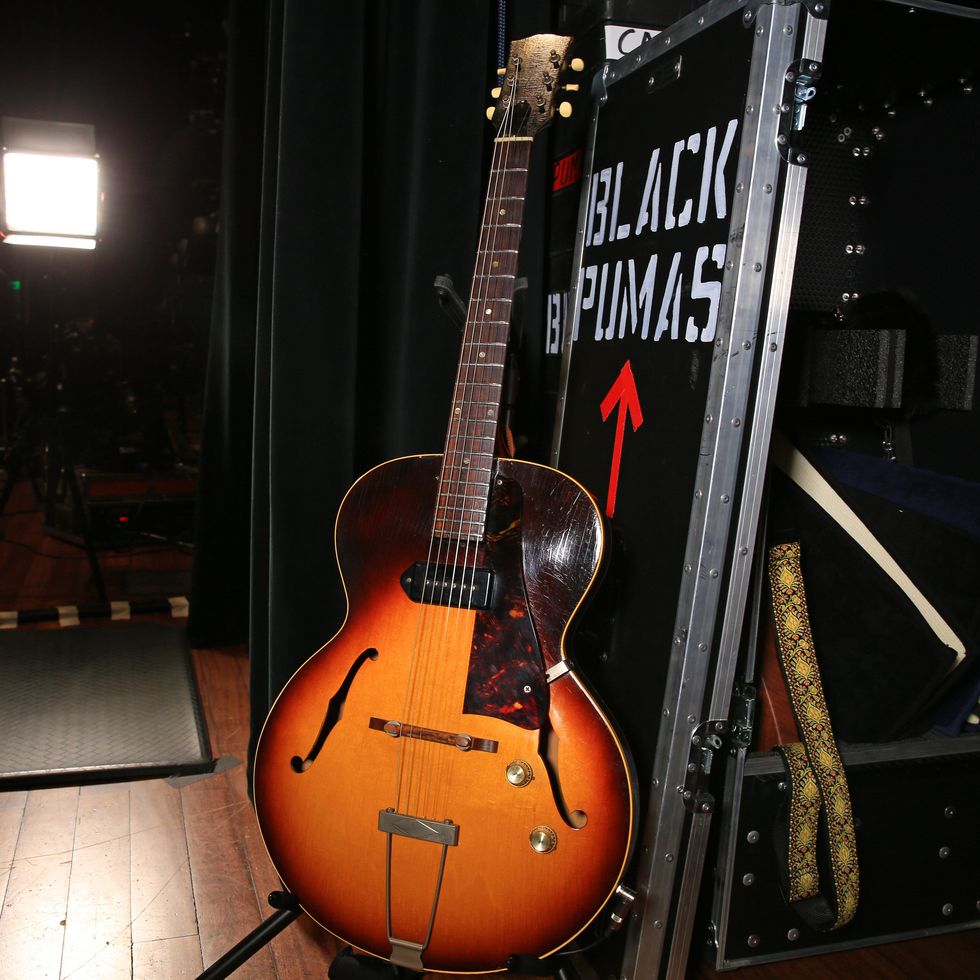
Black Pumas’ singer/guitarist Eric Burton started his career busking in Santa Monica. He’s always accompanied himself with an acoustic guitar, but as the Black Pumas formed and took off, he needed something louder, which pushed him into the hollowbody and semi-hollowbody realm. His main collaborator has been this 1959 ES-125 that is all original and still has its purring P-90. He uses it for the Pumas’ songs “Colors,” “Stay Gold,” “Fast Car,” and “Tomorrow.” Burton’s guitars take D’Addario NYXL1149 Nickel Wounds (.011 –.049).
Stealth Cat
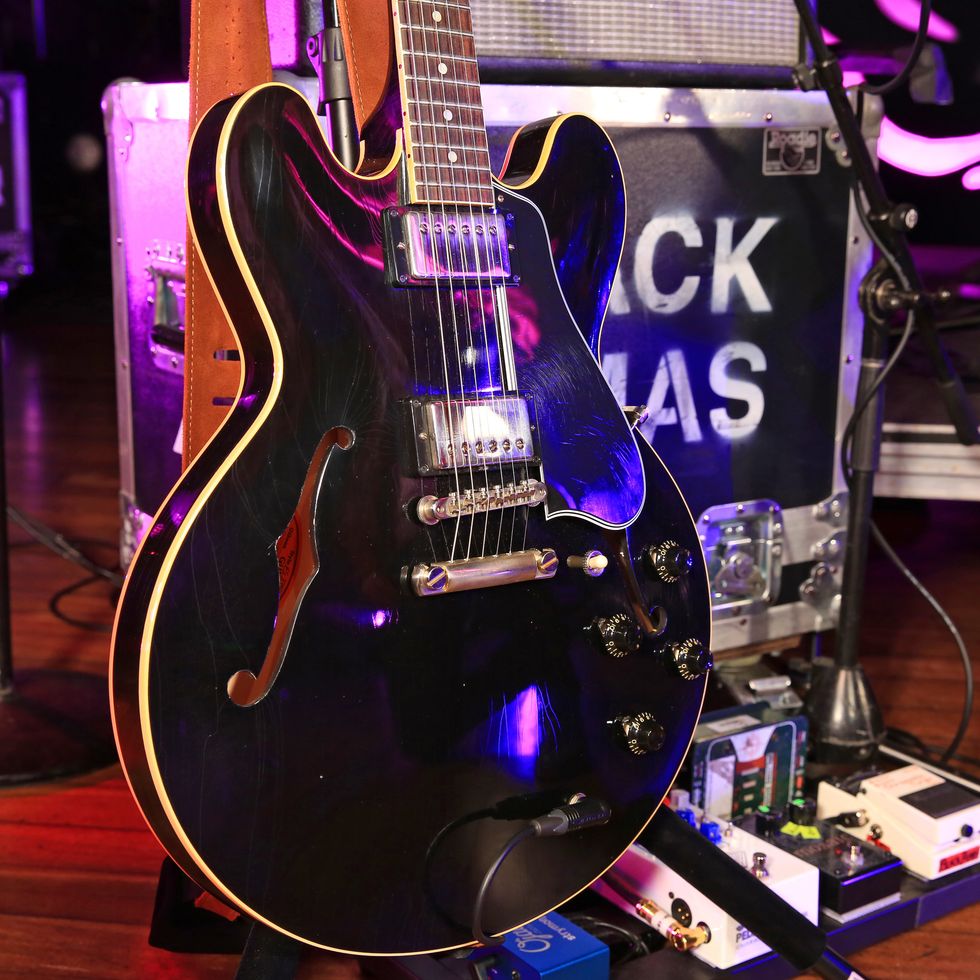
For songs needing more gas and go, Burton will dance with this stock ES-335.
Regal Prince
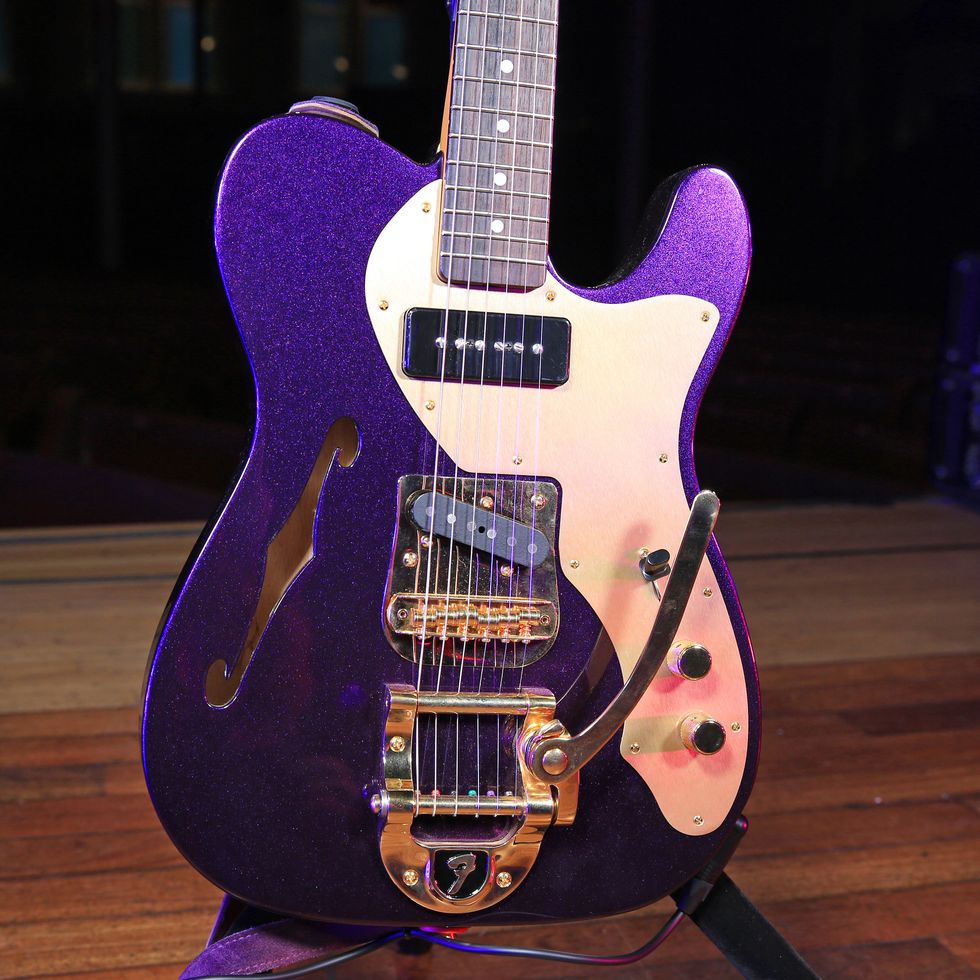
This prototype was born from conversations with the Fender Custom Shop, who took inspiration from Eric’s connection with hollow and semi-hollow instruments. The Telecaster Thinline has a few special appointments, including a sparkle-purple finish offset with gold hardware and an anodized gold pickguard, conjuring thoughts of the president of Paisley Park. The other interesting bit is the hot P-90 in the neck position.
Mighty Mate
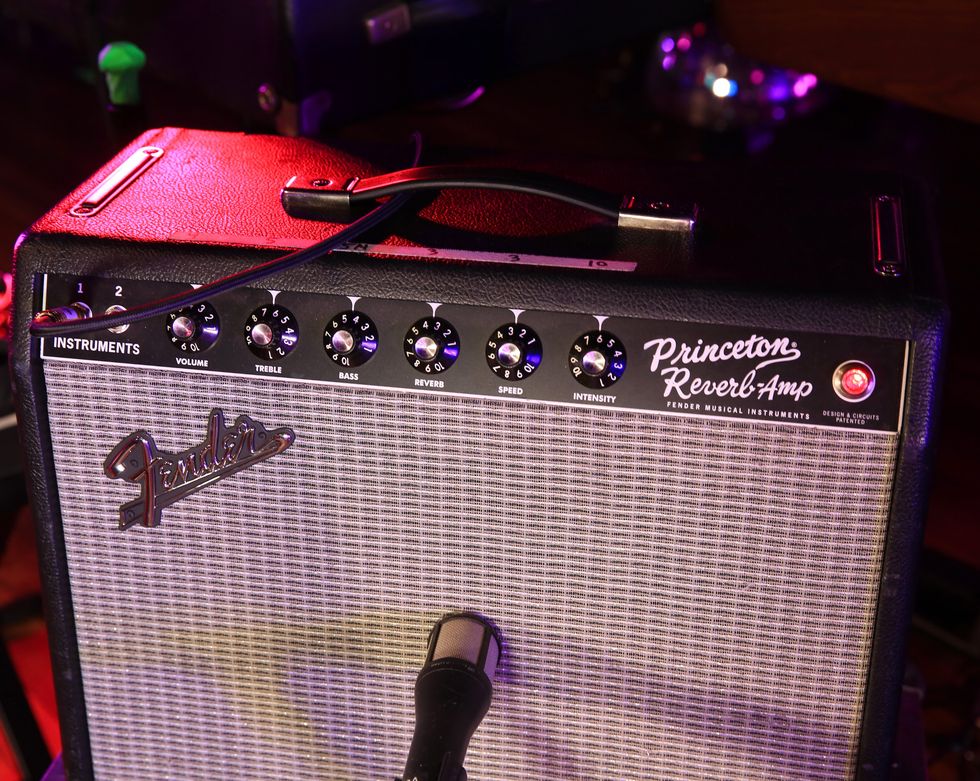
Burton plugs all his guitars into an off-the-shelf Fender ’65 Princeton Reverb.
Eric Burton's Pedalboard
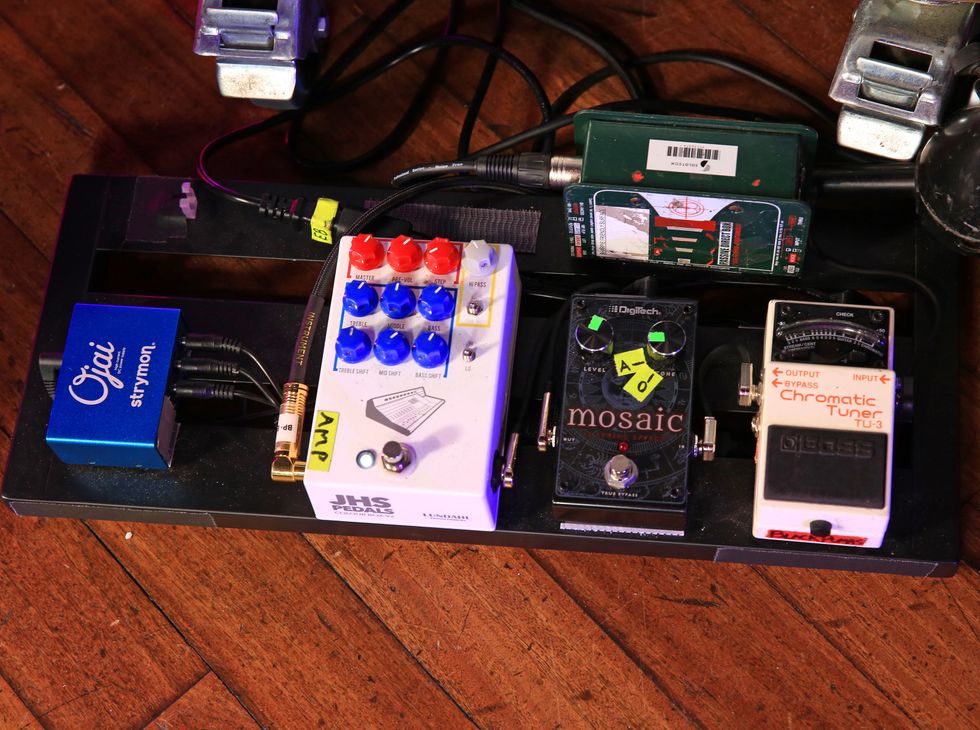
Burton is the band’s lone wireless member. To accommodate his onstage prowling, tech Bryan Wilkinson uses a Radial JDI passive direct box that takes in the XLR from the audio subsnake wireless rackmount and routes it into the first pedal Boss TU-3 Chromatic Tuner. From there, Burton only has a couple pedals—a DigiTech Mosaic to mimic a 12-string for “OCT 33” and a JHS Colour Box for any required heat. A Strymon Ojai turns everything on.
Shop Black Pumas' Rig

Gibson ES-345
Fender ’68 Custom Deluxe Reverb
Strymon Flint
EHX Holy Grail
Catalinbread Echorec
Boss GE-7 Equalizer
Catalinbread Belle Epoch
EarthQuaker Devices Park Fuzz
Fulltone Clyde Deluxe Wah Pedal
JHS 3 Series Delay
JHS Crayon
Electro-Harmonix Nano POG
Strymon Ojai
JHS Mini A/B
TC Electronic PolyTune
TC Electronic PolyTune 3 Noir Mini Polyphonic Tuning Pedal
D’Addario EXL125 XLs (.009 –.046)
D’Addario ECB81 Chromes Flatwounds (.045 –.100)
Fender Super Bassman
Bassman 410 Neo Cab
Acme Audio Motown DI WB-3 Passive DI Box
JHS Colour Box
Boss TU-3
D’Addario NYXL1149 NYXLs (.011 –.049)
Gibson ES-335
Fender Telecaster Thinline
Fender ’65 Princeton Reverb
Radial JDI Passive Direct Box
DigiTech Mosaic






![Rig Rundown: Russian Circles’ Mike Sullivan [2025]](https://www.premierguitar.com/media-library/youtube.jpg?id=62303631&width=1245&height=700&quality=70&coordinates=0%2C0%2C0%2C0)



























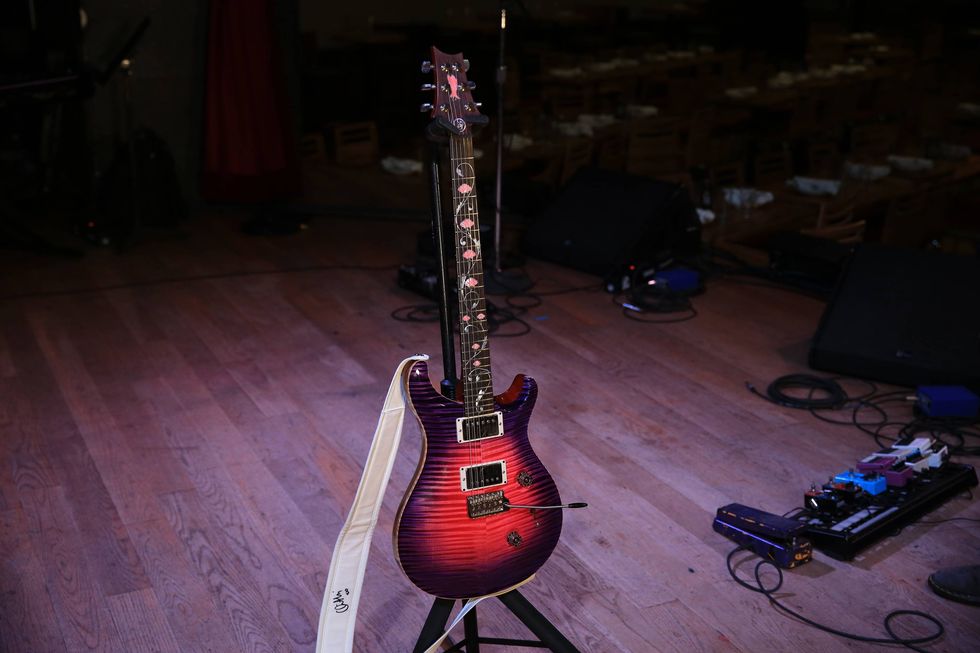
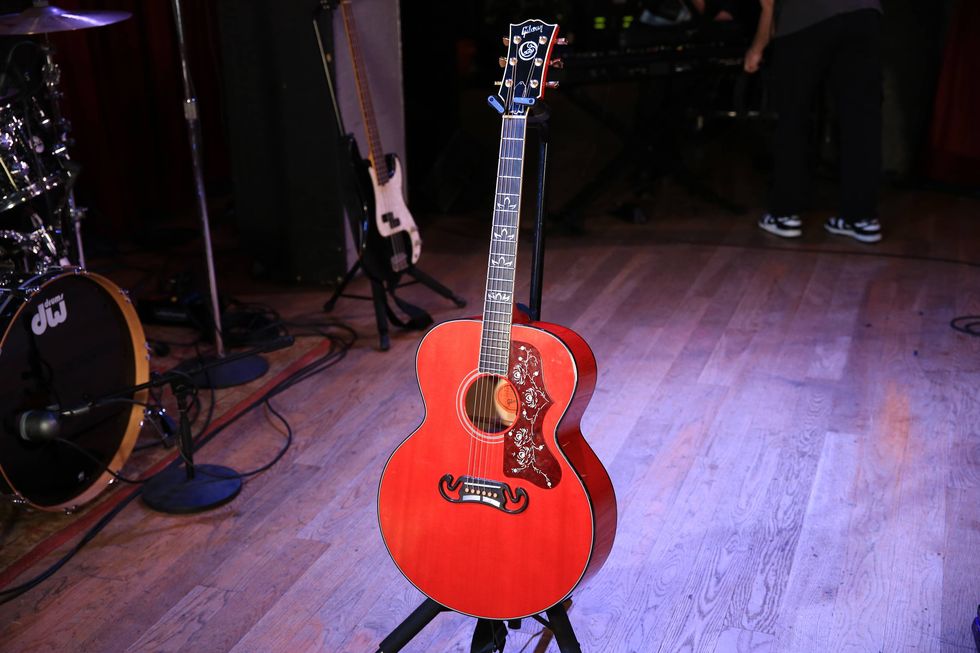
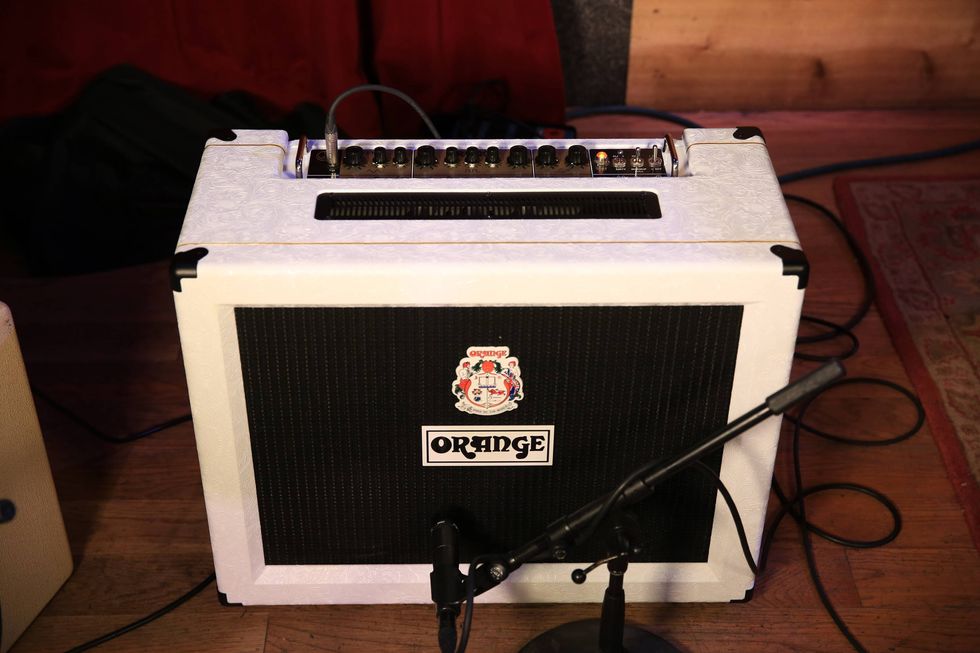
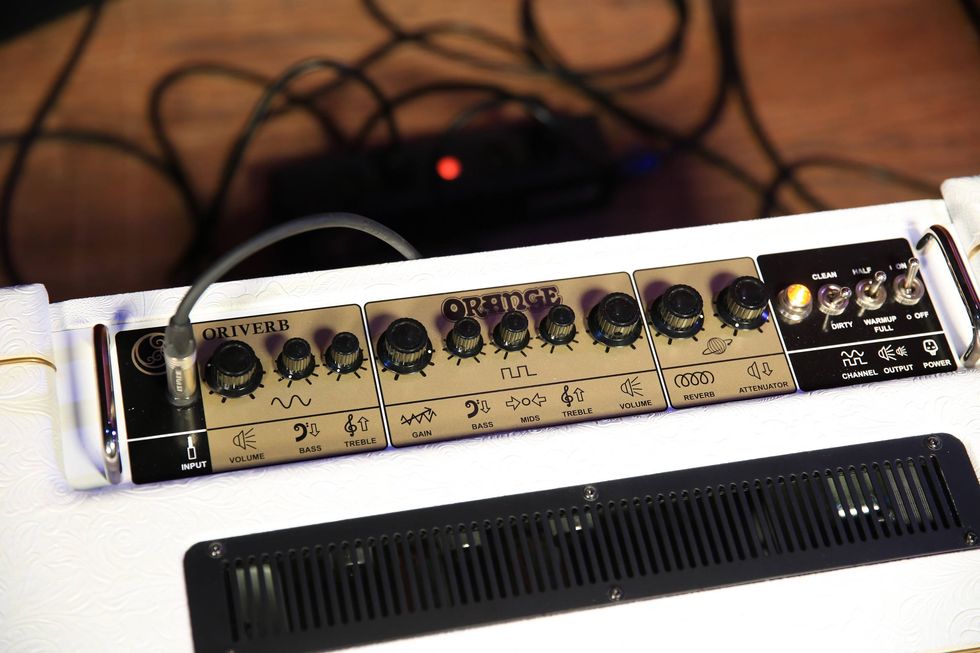
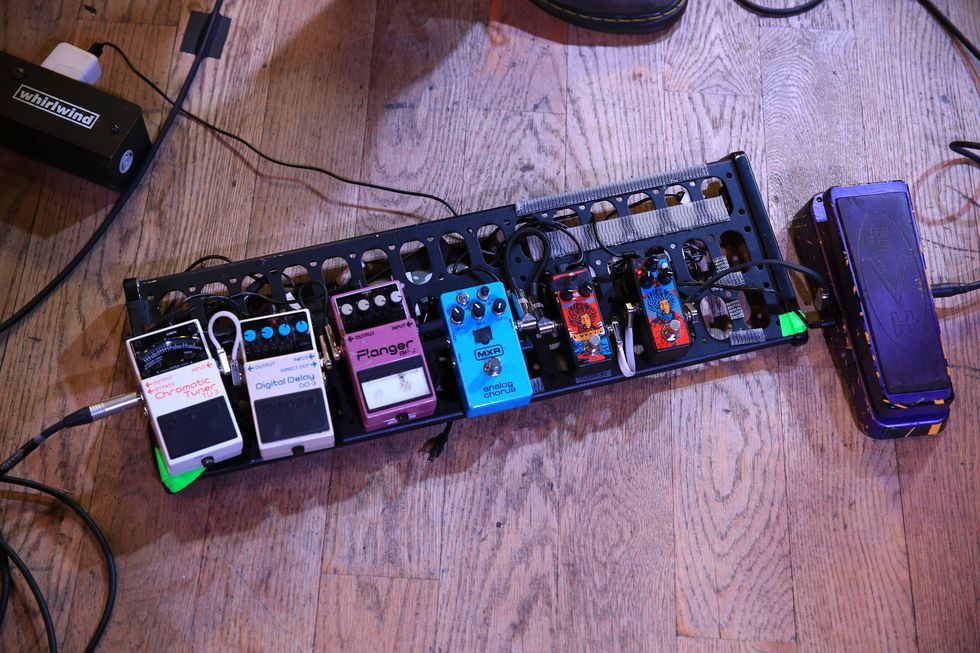

![Rig Rundown: AFI [2025]](https://www.premierguitar.com/media-library/youtube.jpg?id=62064741&width=1245&height=700&quality=70&coordinates=0%2C0%2C0%2C0)




















 Zach loves his Sovtek Mig 60 head, which he plays through a cab he built himself at a pipe-organ shop in Denver. Every glue joint is lined with thin leather for maximum air tightness, and it’s stocked with Celestion G12M Greenback speakers.
Zach loves his Sovtek Mig 60 head, which he plays through a cab he built himself at a pipe-organ shop in Denver. Every glue joint is lined with thin leather for maximum air tightness, and it’s stocked with Celestion G12M Greenback speakers.






